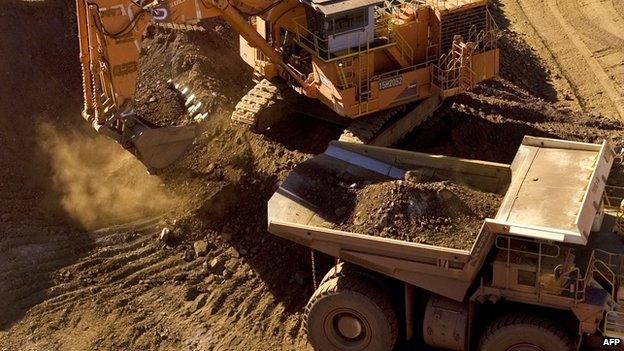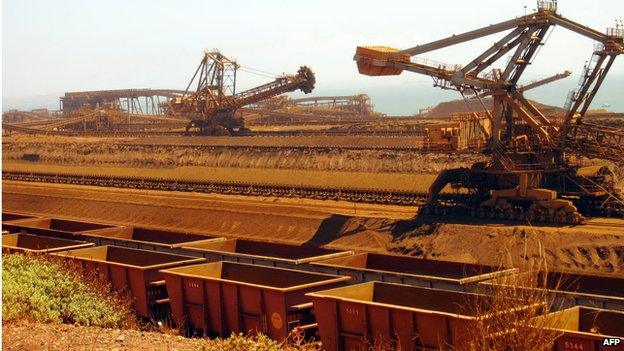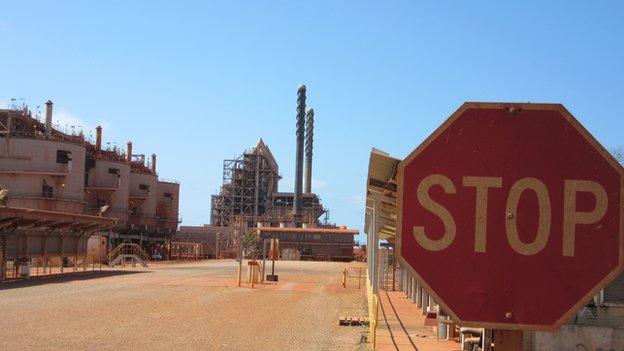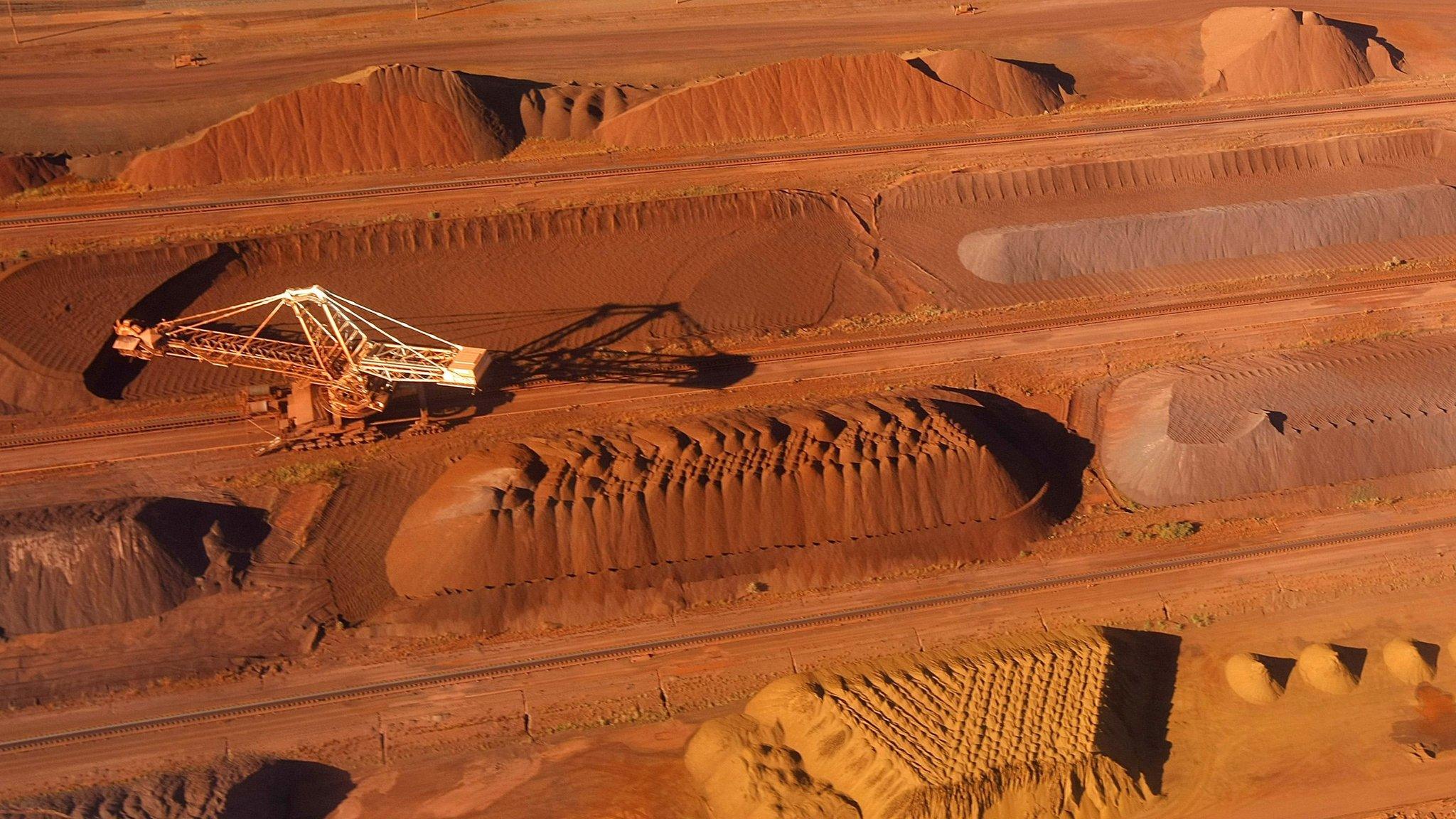Falling iron ore prices 'to wipe A$25bn off Australia revenues'
- Published

Australia is one of the world's biggest exporters of iron ore
Australia expects the plunging price of iron ore - its biggest export - to reduce revenue forecasts by A$25bn (£13bn; $19bn) over the next four years, Treasurer Joe Hockey has said.
He told the Australian Financial Review, external (AFR) that his May budget would be based on the anticipated price of iron ore falling further, to $35 a tonne.
Iron ore is currently trading at $47 a tonne - down from $120 a tonne in 2013.
The drop has been blamed partly on falling demand in China.
The estimated price of $35 a tonne is even lower than the conservative forecast from December's budget update, which assumed prices would fall to $60 a tonne.
"There seems to be no floor, we are contemplating as low as $35 a tonne," Mr Hockey told the AFR.

The falling price of iron ore is expected to hit the economy of Western Australia particularly hard
He said every fall of $10 in the price of the ore cost the Australian economy A$2.5bn in revenue.
Mr Hockey is due to present his budget on 12 May.
He told the AFR the budget would contain "a credible path back to surplus" but refused to say when a surplus may be achieved.
He also could not guarantee that the deficit may not worsen again.
He said the government would have to continue pursuing structural savings, which have included unpopular cuts to health and welfare budgets.
In a separate interview, external with ABC News Breakfast on Monday, Mr Hockey said there was "no doubt" iron ore prices had a big impact on the budget.
But, he said, the government would not impose new taxes to compensate for the lost revenue.
The drop in the value of iron ore has been linked to a slowdown in China, as well as to steady output from Chinese producers who are competing with major Australian mining companies.
- Published4 January 2015
.jpg)
- Published21 October 2014

- Published25 August 2013
